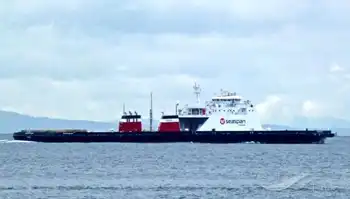Lexington's double poles get undivided attention
By Boston Globe
Protective Relay Training - Basic
Our customized live online or in‑person group training can be delivered to your staff at your location.

- Live Online
- 12 hours Instructor-led
- Group Training Available
The goal is to coordinate efforts to move high-voltage lines, transformers, and other cables and wires so that the 300-plus double poles in Lexington neighborhoods can be removed.
"Over the years, there have been substantial upgrades to the town's electrical system, which has required Verizon to put in more double poles than they took out," said Bill Hadley, director of the Department of Public Works. "The goal is to remove them all. Our hope is to meet the last week of May."
The ramped-up effort to eradicate double poles comes on the heels of the town meeting, where residents overwhelmingly approved an article that requires selectmen to solicit state support for legislation that would impose a schedule of fines on utility companies that fail to remove double poles in a timely manner.
Currently, state law mandates that double poles be removed within 90 days of their installation, but the measure does not impose penalties for noncompliance.
In each community, a single utility company is responsible for coordinating the removal effort; in Lexington, that company is Verizon.
"It was made clear to us at Town Meeting that the need to address this issue is of paramount importance to the town," said Stanley Usovicz, Verizon's regional director of external affairs. "We continue to work on this, and plan to eliminate another 40 double poles by June."
But such promises offer little comfort to residents who have been waiting, in some cases for years, to see work crews remove the double poles in their neighborhoods.
"The repeated promises we have received from Verizon have remained unfulfilled," said Patrick Mehr, who authored the resolution passed by Town Meeting. "The situation will remain unchanged until the state Legislature revisits this issue."
In 2003, state lawmakers decided to give utilities time to work on their Pole Lifetime Management, or PLM, database. The database is designed to ensure that local utilities can share information about poles in an effort to expedite their removal.
At that time, there were 373 double poles in Lexington, Mehr said.
By 2006, when Verizon secured permission to offer FiOS cable services in town, there were 243 double poles. At the time, Verizon assured selectmen that the company would move swiftly to clear the backlog and eliminate the double poles.
Today, however, there are 345 double poles, Mehr said, citing a townwide survey he and another volunteer conducted late last month. The pair spent more than 20 hours driving through town, covering more than 200 miles, to document all of Lexington's double poles.
Mehr compared their findings with the PLM database and discovered that the database does not mention 75 of the town's double poles.
Moreover, much of the information in the database is inaccurate, Mehr said, noting that 12 of the PLM records are duplicates, and 34 of the poles included in the database do not exist.
Mehr said he also examined several of the poles on the list to see whether their current status was reflected accurately in the PLMdatabase. "I chose four poles at random and found errors on the records for all four of them," Mehr said.
According to Usovicz, the problems may have been caused by a breakdown in communication among the utilities.
Double poles are installed when older poles are unable to carry all the wires needed to provide service, or when they are damaged, usually by storms or vehicles.
When a second pole is deemed necessary, utilities are supposed to communicate with one another via the PLM database to ensure that each set of wires is transferred. Once that work is complete, the old pole is removed.
When information in the PLM database is inaccurate, it slows the removal process. Usovicz said he plans to address that issue at this month's meeting.
"A great deal of the (PLM) data is dependent upon input from the electric company (Nstar), the municipality, and other utilities that use the pole," said Usovicz. "They all use the database. When they move their wires, it's up to them to ensure that's reflected in the database.
"We plan to work with town officials and the representatives from the other utilities to ensure that the database is accurate, and that everyone is using it appropriately."











